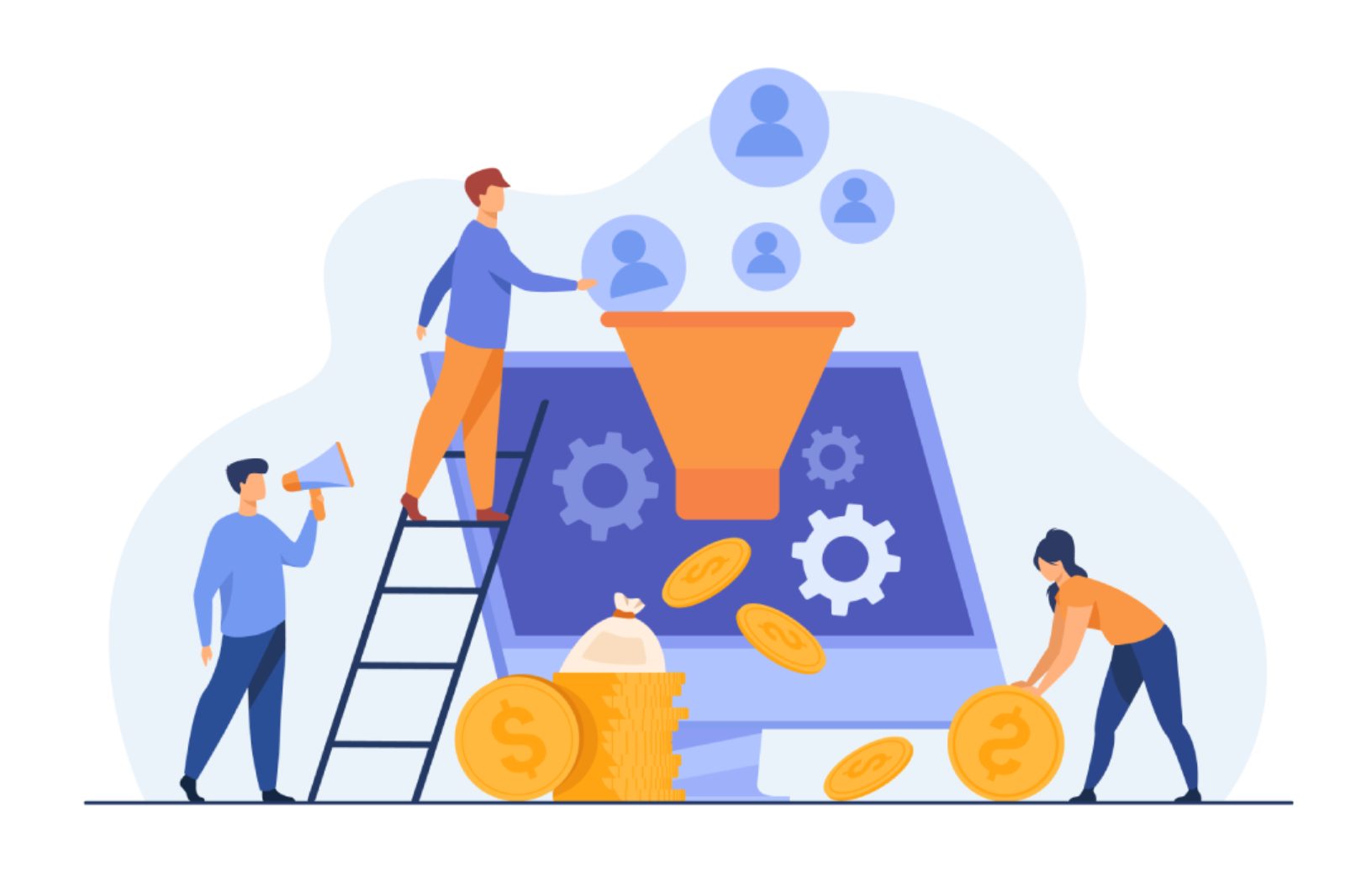
In today’s highly competitive B2B space, LinkedIn has emerged as a powerhouse for lead generation. With over 900 million members globally, this platform isn’t just a digital resume repository but a thriving hub for business networking, content discovery, and relationship-building. For senior marketing leaders, sales directors, and digital marketing specialists, leveraging LinkedIn effectively can mean the difference between hitting your lead generation targets and falling short.
However, success on LinkedIn doesn’t come from sporadic activity or guesswork. A structured approach is paramount to harness its potential for linkedin B2B lead generation. This blog provides the ultimate LinkedIn marketing checklist to optimize your efforts, improve your ROI, and generate high-quality leads.
1. Optimize Your LinkedIn Profile and Company Page
Your LinkedIn profile and company page are often the first point of contact for potential leads. Ensuring they are professional, optimized, and value-driven is the foundation of successful lead generation using LinkedIn.
Personal Profile Checklist
- Professional Headshot: Use a high-quality profile picture to establish trust and credibility.
- Headline & Summary: Highlight your expertise and how you solve clients’ problems (e.g., “Helping B2B SaaS Companies Increase Revenue Through Proven Marketing Strategies”).
- Custom URL: Create a custom LinkedIn URL to make your profile easily shareable and professional.
- Featured Section: Showcase your best work, such as case studies, articles, or presentations.
- Skills & Endorsements: Include targeted skills that reflect your professional expertise and get endorsements from colleagues or clients.
Company Page Checklist
- Logo and Cover Image: Ensure the branding is consistent with your company’s website and other marketing materials.
- About Section: Clearly state your company’s mission, services, and value proposition. Use keywords like “LinkedIn optimization” and “lead generation strategies” to enhance visibility.
- Call-to-Action (CTA): Include a direct link in your profile to a lead magnet, such as a free resource or consultation offer.
- Regular Updates: Share engaging content at least 2-3 times a week to keep the page active and relevant.
2. Content Creation and Curation Strategies for Lead Generation
Content marketing is at the heart of LinkedIn B2B lead generation. Sharing valuable, industry-specific content establishes your thought leadership and attracts your target audience.
Types of Content to Create
- Articles and Blogs: Publish insightful content that addresses your audience’s pain points, such as “Top B2B Lead Generation Tips in 2023.”
- Case Studies and Customer Success Stories: Demonstrate how your product or service delivers measurable results.
- Short-form Posts: Use quick, engaging posts to share stats, insights, or thought-provoking questions.
- Videos and Infographics: Visual content garners higher engagement and communicates complex information succinctly.
Content Curation Checklist
- Third-party Resources: Share industry news, trends, and reports from trusted authorities.
- Hashtags: Use relevant hashtags (e.g., #B2BMarketing, #LinkedInOptimization) to increase visibility.
- Engage with Content: Like, comment on, and share content from others in your niche to build reciprocity.
3. Best Practices for Networking and Building Connections
LinkedIn is, first and foremost, a networking platform. Cultivating meaningful connections is a crucial component of lead generation using LinkedIn.
Connection Requests
- Personalized Messages: When sending a connection request, include a brief, customized note stating why you want to connect.
- Targeted Outreach: Focus on decision-makers and influencers in your niche, such as CMOs or senior executives in target companies.
Engagement Strategies
- Engage in Comments: Start meaningful conversations by commenting on posts from your network or industry leaders.
- Active Participation in Groups: Join and interact in LinkedIn groups relevant to your industry.
- Follow-up Messages: Post-connection, send a follow-up message that adds value rather than pitching (e.g., sharing an insightful article or inviting them to a webinar).
4. Advanced LinkedIn Tools and Features for Lead Generation
LinkedIn offers a suite of tools and features designed specifically for optimizing lead generation efforts.
LinkedIn Sales Navigator
- This premium tool is a game-changer for prospecting. It provides
- Advanced Search Filters: Pinpoint your ideal leads by filtering by industry, company size, job title, and more.
- Lead Recommendations: Get real-time suggestions for potential leads based on your search behavior.
- InMail Functionality: Send messages to people outside of your immediate network.
LinkedIn Ads
- Sponsored Content: Promote your top-performing posts to a highly targeted audience.
- Lead Gen Forms: Use LinkedIn’s native lead generation forms for seamless data collection.
- Retargeting: Re-engage users who’ve interacted with your company page or website.
LinkedIn Events
Host webinars or virtual workshops to position yourself as a thought leader while gathering valuable contact information.
5. Measuring and Analyzing LinkedIn Lead Generation Performance
To fine-tune your strategies over time, you need to track your performance metrics diligently.
Key Metrics to Monitor
- Profile Views: An increase in profile views can indicate heightened interest from potential leads.
- Engagement Rate: Measure likes, comments, and shares on your content to evaluate its relevance.
- Connection Requests Sent vs. Accepted: Track your connection acceptance rate to refine your outreach strategy.
- Lead Generation ROI: Calculate the return on investment for paid campaigns and tools like Sales Navigator.
- Website Traffic from LinkedIn: Use Google Analytics to assess how much referral traffic your LinkedIn efforts are generating.
Tools for Analysis
- LinkedIn Analytics: Access insights directly on your profile and company page.
- Third-party Tools: Use tools like HubSpot or Hootsuite for in-depth performance reports.
6. Tips for Continuous Improvement and Staying Updated
LinkedIn is constantly evolving, and staying up-to-date with new features and trends is crucial.
- Stay Updated: Follow LinkedIn’s official blog and industry leaders to stay aware of feature updates and algorithm changes.
- Experiment and Test: Regularly test different content types, targeting criteria, and outreach methods to see what resonates best with your audience.
- Gather Feedback: Encourage colleagues or peers to review your profile and company page for suggestions.
Conclusion
LinkedIn B2B lead generation isn’t about quick wins; it’s a long-term strategy that requires persistence, creativity, and careful planning. By following this LinkedIn marketing checklist, you can systematically optimize your profile, create compelling content, network effectively, and use advanced tools to generate high-quality leads.
Remember, lead generation strategies on LinkedIn are not static. As the platform evolves, so must your approach. Keep experimenting, analyzing your performance, and refining your tactics to stay ahead in the competitive B2B landscape.
Ready to take your LinkedIn lead generation to the next level? Visit our website today to learn how we can help you build a powerful LinkedIn strategy tailored to your business goals.
By following this structured guide, B2B executives, marketing leaders, and digital specialists can leverage LinkedIn as a key driver of business growth.



